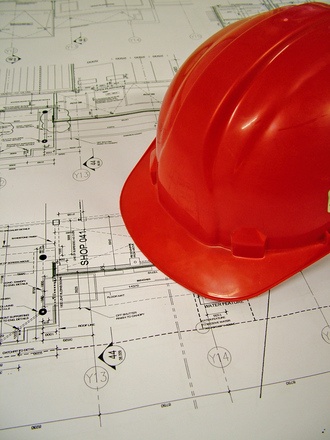
Why have a Master Schedule? What should be included in that schedule?
[fa icon="calendar'] Jun 26, 2017 10:53:00 AM / by John R. Manning, PE, CCM, LEED
In parallel with the development of the budget is the development of the Master Project Schedule. This schedule will outline the goals of the Owner for the project with respect to time.
The Owner’s representative should develop various alternative approaches for phasing, sequencing, management and implementation of the project from due diligence through commissioning. This schedule is an outline of the key activities necessary to complete the project. Then based upon review with the Owner, the Owners’ Representative will prepare a final Master Schedule that will detail the overall time related goals for the project. This schedule should be presented in a format that the Owner can comprehend even if it is developed in a sophisticated scheduling program like Primavera P6. It is critical that the Owner’s Representative get acceptance of the time line from the Owner prior to finalizing the Master Schedule.

Preliminary Cost Investigations and the Importance of a Detailed Budget
[fa icon="calendar'] Jun 21, 2017 9:55:27 AM / by John R. Manning, PE, CCM, LEED
This is the sixth post in our year-long series about the best ways to work with your Owner's Representative. You can view all of the series posts here.
The most critical segment of the pre-design phase of your project is the development of a sound budget through good preliminary cost investigations.
A project can be made or lost in those crucial first few days or weeks if careful thought is not put into the budget. Once the budget is set and the Owner gets its funding it becomes an uphill battle to get more funding so all budgets need to be reviewed by everyone who has a stake in the project from the Owner’s side. The budget should be broken out in adequate detail to allow everyone to understand what is included in the budget and what is not included in the budget.
Most of the time budgets are developed with little, if any, design documentation. This initial budget estimate may be required prior to any plans or sketches and be based solely on a “concept” or “program,” hence the need for a well thought out and written Scope or Project Requirements, which should be developed in parallel with the budget and will provide the detail of what is included in the budget.
Actual estimating will typically be limited at this stage to broad budget type numbers based upon areas. Those areas should be included in a written Scope or Project Requirements (Program). In any budget breakdown, notes should be added to line items to ensure that others understand what was considered and be able to follow the budget logic.

What should be considered in a proper project site due diligence?
[fa icon="calendar'] Jun 9, 2017 9:45:11 AM / by John R. Manning, PE, CCM, LEED
This is the fifth post in our year-long series about the best ways to work with your Owner's Representative. You can view all of the series posts here.
In the Pre-Design phase of the project there may be a need for additional due diligence studies to ensure that the project is feasible. One of the first due diligence studies could be a Property Condition Assessment (PCA).
The standard format of PCA is detailed in ASTM E2018. As an Owner’s Representative when asked to assess a property we use this format when performing a due diligence study. The most critical process for the firm who is contracted to perform a PCA is systematically reviewing the property and completing the information required on the standard which will ensure that a property is completely reviewed.

What is Critical in a Project Management System?
[fa icon="calendar'] May 30, 2017 9:36:34 AM / by John R. Manning, PE, CCM, LEED
One of the key areas that require management on projects is the management of data. The larger the project the more data there is to manage. Projects have failed due to the lack of management of data.
Over the past two decades the industry has moved from the era of hard copies in filing cabinets to electronic processes. One reason for this shift was to aid in the management of the large amounts of data required on a project. In the 1980s and 1990s I worked on several multi-billion-dollar theme park projects. The management of data was primarily done with large areas of filing cabinets, plan rooms and libraries of information. There was so much data in hard copy form that, at times, information was forgotten and/or lost. This type of situation drove the development of computerized Project Management Systems. The focus for Project Management Systems was becoming the repository for information on a project that would allow an individual to easily search and find key data.

A Project Management Plan is key to a successfully run project
[fa icon="calendar'] Mar 21, 2017 8:39:04 AM / by John R. Manning, PE, CCM, LEED
This is the third post in our year-long series about the best ways to work with your Owner's Representative. You can view all of the series posts here.
The Project Management Plan is the heart and soul of how the Owner’s Project Team will run the project.
This plan outlines key visions of the leader of the Owner’s Representative Team on how the project should be run. Not having a plan will cause starts and stops in a project as the collective team (Owner, Design Team and Contractor) wait until the Owner’s Representative puts in place the segments of this plan on the fly. Development of this plan will help put in writing the vision of the project, budget, schedule and processes necessary to achieve that vision.
The key elements of a Project Management Plan include at a minimum:

What is the Proper Organization for Your Project?
[fa icon="calendar'] Feb 28, 2017 9:09:07 AM / by John R. Manning, PE, CCM, LEED
This is the second post in our year-long series about the best ways to work with your Owner's Representative. You can view all of the series posts here.
Logically the proper project organization will depend upon the size and complexity of the project. One thing that will never change is the need for there to be one key leader for the Owner on the project.
We noted in our first blog of 2017 one of the key findings of research into failed projects is, “Leadership from Owners needed to increase and there is a need for a strong Owner's representative’s presence.” Whether it is a single individual as the sole representative for the Owner of the project or he/she is the leader of a group of individuals representing the Owner of the project singularly or collectively they must be competent to lead the project from concept to completion. The Owner’s Representative(s) must have the ability, authority and responsibility to execute the requirements of the Owner on the project. This starts with a clear vision for what the finished project will be and the ability to detail that vision to all other stakeholders in the Project. This starts with the development of strong contracts for the Designer(s), Contractor(s) and any other entity necessary for the successful completion of the project.
Collectively the Owner’s Representative team needs have the skill set capable of taking a project from concept to completion, ensuring that the best interests of the Owner are maintained. This team may be totally in-house (employed by the Owner), totally out-sourced (contracted Owner’s Representative) or a mixture. On larger projects there could be multiple tiers of representatives each responsible for a different area of the project or for different scopes. It will be critical for the individual who is in charge of representing the Owner, overall on the project, to detail the job functions of the individuals assigned to the project regardless of which of the three scenarios detailed above are utilized.

Why Do You Need Good Project Procedures?
[fa icon="calendar'] Feb 2, 2017 10:06:51 AM / by John R. Manning, PE, CCM, LEED
This is the fourth post in our year-long series about the best ways to work with your Owner's Representative. You can view all of the series posts here.
Good Project Procedures are critical for a well-run project.
They help everyone on a project know the ground rules and processes needed to successfully work together as a team. It is critical that Owner’s Representatives take the lead in pulling a Procedure Manual together and detailing those processes to everyone on the project.
A good Project Procedures Manual should address at a minimum:
1. Functional Responsibilities and Limits of Authority
The roles and responsibilities for all the key participants on a project must be detailed. If Contracts are in place the roles and responsibilities should adhere to those Contracts. As the old saying goes on problem projects –“Well the problem here is we have responsibility without authority.” It is critical that when someone is placed in a position of responsibility that they are granted the appropriate authority. The Procedure Manual should detail responsibilities by the level of authority. Flow charts work well with depicting levels of responsibilities and authorities.
2. Document Control
Projects have a large amount of documents. A procedure must be put in place on how to manage those documents. In the current world there are many forms of electronic document management systems out there. Most projects today do not keep the amount of paper files that were generated in the past. Cloud based systems are generally the most efficient way to go for a project to handle electronic documents however the processes need to be planned out. A detailed document control procedure should be put in place from the start, one that is thoroughly thought out. There are ways to manage, view and markup documents virtually from anywhere. The cost of these systems could be on the low end of using a cloud based filing system like Google Drive® and BOX® or a full blown PM system like Procore®. This document control process should detail any and all filing systems whether electronic or hard copy that all will adhere to on the project. If not, then time will be wasted searching for documents that should be easily found. This is one of the key reasons the computerized project management systems have been growing in the industry as they force teams to adhere to a process that allows for proper filing and ease of searching.

Importance of a safety culture on job sites
[fa icon="calendar'] Sep 28, 2015 1:17:58 PM / by Kenneth R Quigley, PE
A culture of safety does more than just protect your firm from law suits and protect your employees from injuries. A recent article from Engineering News-Record states that it actually helps productivity, job quality and increased return on investment.
Read More [fa icon="long-arrow-right"]Liability Limitations on the Construction Manager's Role
[fa icon="calendar'] Sep 14, 2015 7:00:00 AM / by John R. Manning, PE, CCM, LEED
When considering the use of a Construction Manager at Risk (CMAR), it is critical that an owner understands the limitations of liability that a CMAR has in regards to their design review services. As PretiFlaherty reported on September 3rd, the Massachusetts Supreme Court recently clarified the construction manager’s role.
Read More [fa icon="long-arrow-right"]
